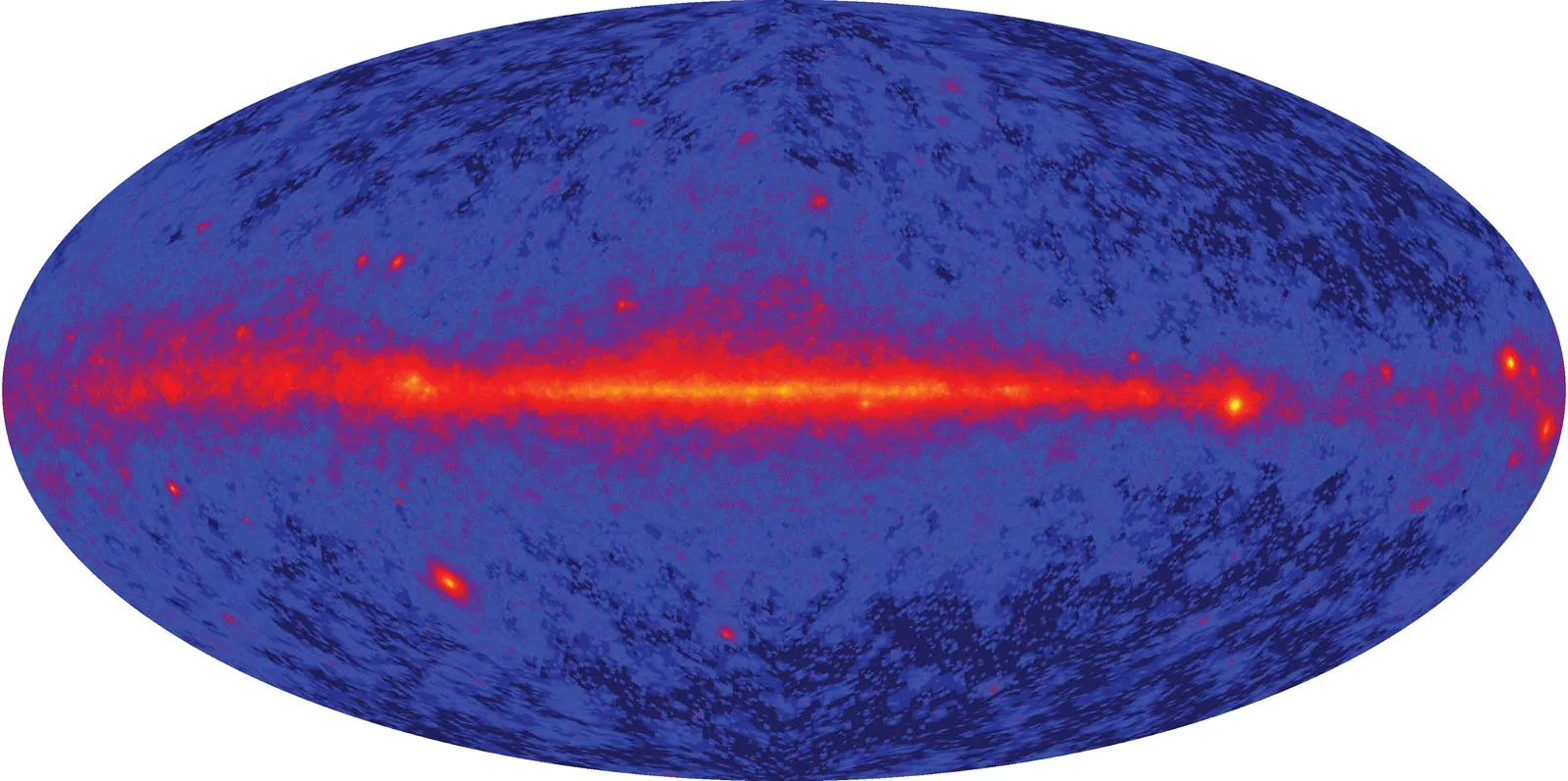
Gamma-ray observations have revolutionized our understanding of the Universe, uncovering incredible secrets and unraveling cosmic mysteries. In recent years, instruments like Fermi-LAT (Large Area Telescope) and MAGIC (Major Atmospheric Gamma Imaging Cherenkov) have enabled scientists to delve deeper into the high-energy realm and capture stunning insights into the most violent and energetic events in the cosmos.
In this article, we will explore 11 surprising facts about gamma-ray observations, showcasing the remarkable discoveries made possible by these cutting-edge technologies. From the detection of powerful gamma-ray bursts to the identification of gamma-ray sources spanning different celestial objects, prepare to be amazed by the mind-blowing phenomena that occur at gamma-ray wavelengths.
So, fasten your seatbelts, and let’s embark on an exhilarating journey through the gamma-ray universe, where reality surpasses imagination.
Key Takeaways:
- Gamma-ray observations reveal the universe’s most powerful explosions, black holes’ secrets, and dark matter’s existence, offering a unique window into the cosmos’ extreme phenomena.
- The accidental discovery of gamma-ray bursts led to groundbreaking insights, and future observations promise exciting new discoveries, unveiling the universe’s mysteries.
Gamma-ray bursts were discovered accidentally.
While conducting nuclear weapons tests in space during the 1960s, scientists stumbled upon mysterious bursts of gamma rays. This accidental discovery led to further investigations and the subsequent realization that gamma-ray observations hold immense scientific value.
The Fermi-LAT telescope has detected thousands of sources.
The Fermi Large Area Telescope (LAT) is a space-based instrument that has revolutionized our understanding of gamma-ray astronomy. Since its launch in 2008, it has discovered thousands of sources emitting high-energy gamma rays, providing crucial insights into the universe’s most extreme phenomena.
MAGIC is the largest ground-based gamma-ray observatory.
The Major Atmospheric Gamma Imaging Cherenkov (MAGIC) observatory, located in the Canary Islands, Spain, is the largest of its kind. It uses a system of telescopes to detect gamma rays from distant cosmic sources with unprecedented precision and sensitivity.
Gamma-ray observations help study black holes.
Black holes are colossal entities with gravitational pull so strong that not even light can escape their grasp. By analyzing gamma-ray emissions from active galactic nuclei and gamma-ray bursts, scientists gain valuable insights into the behavior and properties of black holes.
Gamma-ray observations reveal the existence of dark matter.
Dark matter, which makes up a significant portion of the universe, is an elusive and invisible substance. Gamma-ray observations have provided compelling evidence of dark matter, aiding in our quest to understand the composition and structure of the cosmos.
Gamma-ray bursts are the most powerful explosions in the universe.
With energies billions of times greater than that of the Sun, gamma-ray bursts are some of the most energetic events in the universe. These extraordinary explosions release immense amounts of gamma radiation, providing astronomers with valuable data for studying cosmic phenomena.
Gamma-ray observations can help uncover the origins of cosmic rays.
Cosmic rays are high-energy particles that originate from various astrophysical sources. By studying the gamma-ray emissions associated with these particles, scientists can decipher the processes and sources responsible for their production.
Gamma-ray observations can detect high-energy photons from distant galaxies.
Gammy-ray observations allow us to observe photons with energies up to many billions of electron volts. These high-energy photons can travel vast distances from distant galaxies, providing a unique window into the violent and energetic processes occurring in the universe.
Gamma-ray observations have opened a new window into studying supernovae.
Supernovae, massive stellar explosions, release an enormous amount of energy, including gamma rays. By studying the gamma-ray emissions during these cosmic events, scientists can gain insights into the life cycles of stars and the formation of certain elements.
Gamma-ray observations can help unravel the mysteries of high-energy astrophysical phenomena.
The study of gamma-ray observations has allowed scientists to investigate a wide range of phenomena, including pulsars, active galactic nuclei, quasars, and gamma-ray bursts. These observations provide valuable data for understanding the extreme physics taking place in the universe.
Future gamma-ray observations hold promising prospects for new discoveries.
With advancements in technology and the launch of new telescopes and instruments, the field of gamma-ray observations is poised for exciting breakthroughs. These future missions will enable us to delve deeper into the mysteries of the universe and uncover new insights into the nature of gamma-ray sources.
Conclusion
In conclusion, the field of gamma-ray observations through instruments like Fermi-LAT and MAGIC has provided us with fascinating insights into the universe. Through the study of gamma-ray emissions, scientists have been able to uncover hidden mysteries and expand our understanding of cosmic phenomena.From the discovery of powerful gamma-ray bursts to the identification of new gamma-ray sources, these observations have revolutionized our knowledge of the universe. By studying the highest-energy photons in the electromagnetic spectrum, we can delve deeper into the most extreme cosmic processes, such as black holes, supernovae, and dark matter.The advancements in gamma-ray observations have also led to unexpected discoveries, like the identification of gamma-ray emission from distant galaxies and the potential hints of new physics beyond the Standard Model.As technology continues to improve and data from these observations continue to pour in, we can expect even more surprises and breakthroughs in the fascinating field of gamma-ray astronomy.
FAQs
1. What are gamma rays?
Gamma rays are a form of high-energy electromagnetic radiation consisting of photons. They have the shortest wavelengths and highest frequencies in the electromagnetic spectrum.
2. How are gamma rays observed?
Gamma rays are observed using specialized telescopes and detectors, such as Fermi-LAT and MAGIC. These instruments detect the high-energy photons and convert them into electrical signals that can be analyzed and studied.
3. What can we learn from gamma-ray observations?
Gamma-ray observations provide valuable information about extreme cosmic processes, such as black holes, supernovae, and the nature of dark matter. They also help us understand the origin and acceleration mechanisms of cosmic rays.
4. Are there any practical applications of gamma-ray observations?
Yes, gamma-ray observations have practical applications in fields such as medical imaging and radiation therapy. They are also used to study nuclear reactions and radioactive materials.
5. Can gamma rays be harmful to humans?
Yes, excessive exposure to gamma rays can be harmful to living organisms, as they can ionize atoms and cause damage to cells. However, the Earth’s atmosphere provides natural protection by absorbing most of the incoming gamma rays, making them safe for life on Earth.
6. How do Fermi-LAT and MAGIC work?
Fermi-LAT and MAGIC are both gamma-ray telescopes that operate on different principles. Fermi-LAT detects gamma rays using a large detector made of a silicon tracker and a calorimeter, while MAGIC uses imaging atmospheric Cherenkov technique to detect the faint flashes of light produced by gamma rays interacting with the Earth’s atmosphere.
7. What are some of the recent discoveries in gamma-ray observations?
Recent discoveries include the detection of gamma-ray bursts from distant galaxies, the identification of gamma-ray emission from pulsars, and the search for dark matter signals in gamma-ray data.
8. Can anyone access the data from Fermi-LAT and MAGIC?
Yes, the data from these observations are publicly available, and researchers from around the world can access and analyze the data to contribute to our understanding of the universe.
9. What future developments can we expect in gamma-ray observations?
Future developments include the launch of new gamma-ray telescopes, such as the Cherenkov Telescope Array (CTA), which will provide even better sensitivity and resolution for studying gamma-ray sources.
10. How do gamma-ray observations contribute to our understanding of the universe?
Gamma-ray observations play a crucial role in unraveling the mysteries of the universe by providing insights into the most energetic and extreme cosmic phenomena. They help us piece together the puzzle of the universe’s evolution and shed light on the fundamental laws of physics.
11. Can gamma-ray observations help us in the search for extraterrestrial life?
While gamma-ray observations may not directly aid in the search for extraterrestrial life, they provide valuable information about the habitability of exoplanets by studying their atmospheres and potential signs of biological activity.Overall, gamma-ray observations have revolutionized our understanding of the universe and continue to be a vital tool in unraveling its mysteries.
Gamma-ray observations have revolutionized our understanding of the universe, but there's still so much more to explore! Dive deeper into the fascinating world of gamma-ray astronomy and uncover the secrets of the cosmos. Have you ever wondered about the mysterious pulsars that emit beams of radiation like cosmic lighthouses? Prepare to be amazed by their incredible properties and how they shape our universe. And if you're curious about the elusive dark matter, join the quest to unravel its mysteries through groundbreaking detection experiments.
Was this page helpful?
Our commitment to delivering trustworthy and engaging content is at the heart of what we do. Each fact on our site is contributed by real users like you, bringing a wealth of diverse insights and information. To ensure the highest standards of accuracy and reliability, our dedicated editors meticulously review each submission. This process guarantees that the facts we share are not only fascinating but also credible. Trust in our commitment to quality and authenticity as you explore and learn with us.


